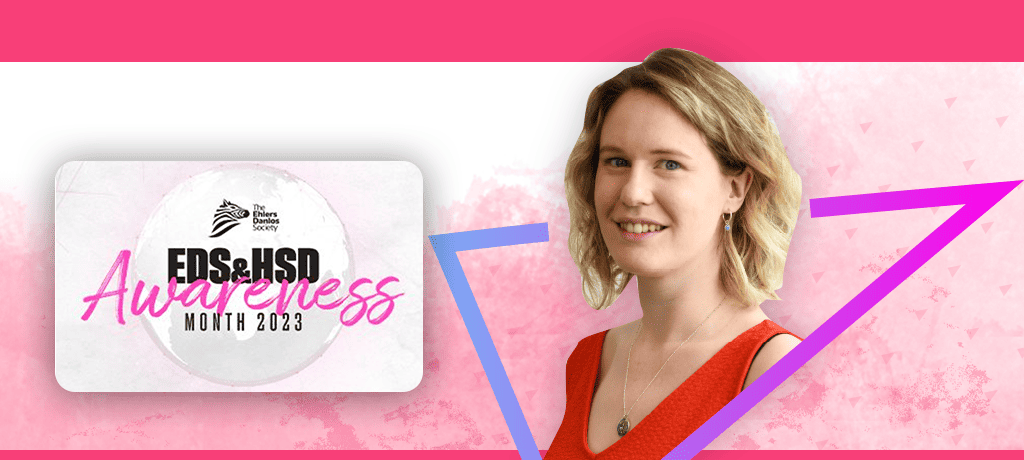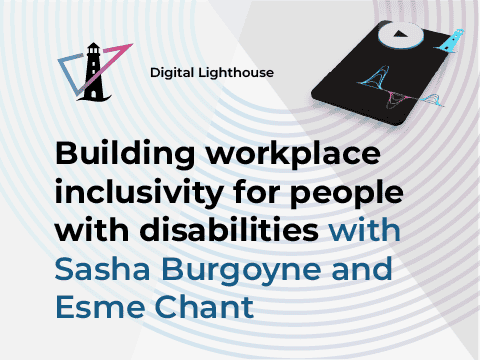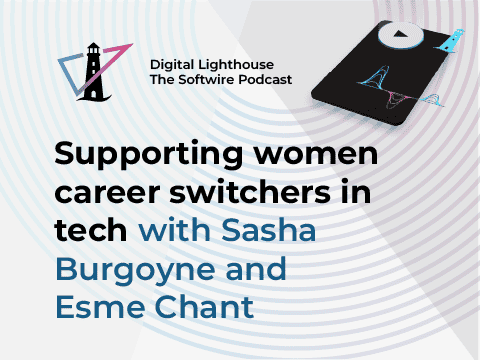
Most of us will have seen the signs on disabled toilet doors, reminding people that ‘not every disability is visible’. This is why events such as EDS and HSD Awareness Month – which takes place every May – are so important. They shine a light on sneaky conditions that are largely invisible to all but the individual concerned.
EDS is short for Ehlers-Danlos syndromes, which is a group of rare inherited conditions that affect connective tissue in the body. HSD – hypermobility spectrum disorder – is where someone has problems caused by hypermobile joints, but doesn’t meet the diagnostic criteria for hEDS.
As someone who has HSD, I wanted to talk a bit about how it impacts me in my desk- and office-based role, and what I do to manage it. Hopefully this will help boost awareness of HSD and EDS, and give organisations some ideas on how they can support employees with one of these conditions. I’ve also included some links to useful resources at the end of the piece, if you’d like to find out more. You’re also welcome to drop me a message.
How HSD affects me
Even several years on from my diagnosis, I’m still learning about the condition and how my body handles different things. It amazes me how I was recently able to go on a fairly intensive four-day hike (and feel great!), yet something as simple as sitting on the bus home caused me all sorts of problems.
In terms of the way HSD impacts me in my role as Softwire’s Head of Academy and TechSwitch, the first major one is that sitting in any position for a long time becomes extremely uncomfortable. This is because my muscles are having to compensate for my looser connective tissue, by working extra-hard to hold my body in a certain position. This is particularly pronounced in certain types of desk chair, meeting room chairs, or seats on trains and buses.
Secondly, because my muscles are having to work harder than those of someone who doesn’t have HSD, debilitating physical fatigue is a real problem. It means I sometimes have to make difficult decisions, such as ‘do I go to work today, or do I save myself to meet up with a friend this evening who I’ve not seen for a long time?’ All too often I pick work.
The physical fatigue also contributes to brain fog. This can make it harder for me to remember things, perform what would otherwise be relatively routine tasks, context-switch, or focus on something. I won’t lie, this can be extremely frustrating: a few years ago, when it was at its worst, I had to message a colleague part-way through a call to ask them to pick up running the meeting because I didn’t really know what was going on and was finding it hard to follow.
The added challenge with the brain fog, is that because it impairs your judgement, it can be difficult to realise it’s happening, which makes it harder to tell yourself to do something about it.
Ways I manage my HSD
So how do I manage my HSD?
As with any condition, no two people are going to experience it in exactly the same way, so the specifics of what works for me, may not work for everyone That said, the things I do fit into some broader areas, which I imagine are going to be applicable to others living with HSD or EDS.
So, I hope the below three methods are helpful, both to individuals coming to terms with their own HSD or EDS, and organisations looking to better support employees with these conditions.
1. Be open with people
For me, the biggest help at work is to let colleagues know about the HSD symptoms I may experience. This helps people understand why I may suddenly need to do something that, without this context, could seem unusual, or even rude.
For example, part of the way I manage my HSD is to keep my body moving and strengthening my muscles around my joints. So I’ll generally go to the gym at lunchtime – and I’ve found it’s very useful that colleagues know why I’m going. We’ve all had days when our team is up against it, and someone then ducking out in the middle of the day for what some may otherwise perceive as a non-essential activity often makes me feel guilty.
That said, a lot of people feel they cannot reveal their disability at work due to very reasonable concerns that others’ preconceptions of their abilities will affect their career progression. I recognise that I’m very fortunate to work somewhere I feel I can be open about it, and where I can honestly say it has never impacted my career progression.
2. Knowing (and respecting) my limits
Equally important, is to know my own limits. In the past, I’ve tried to push through the brain fog, by carrying on working and hoping it goes away. Spoiler alert: it doesn’t. It tends to make things worse. So now, when I feel a flare-up of my symptoms coming on, I’ll force myself to do something about it. This isn’t always easy, of course. There have been lots of times where I’ve been in the middle of something I really wanted to be part of, or situations that are difficult to get away from, so it’s definitely a work in progress! But I’ve learned that listening to my body is the right thing to do in the long run.
3. Adjusting the working environment
The third thing I’ve done is to make adjustments to the working environment. I have a carefully chosen supportive desk chair. I have a motorised standing desk, so that I can change my working position regularly throughout the day (this has replaced a manual standing desk, which I found I didn’t always have the strength needed to lift up). And I keep meetings short, plan breaks into those that need to be longer, or hold certain meetings/calls while going for a wander, or on my walk to the office.
Where to find out more
If you’d like to learn more about these conditions, the NHS page on Ehlers-Danlos syndromes covers the basics, and there’s more research and help available at the Ehlers-Danlos Support UK website.
And, of course, I’m always happy to chat to anyone who’d like to know more about living with HSD, or about ways to support colleagues with it. Feel free to drop me a line on [email protected]


